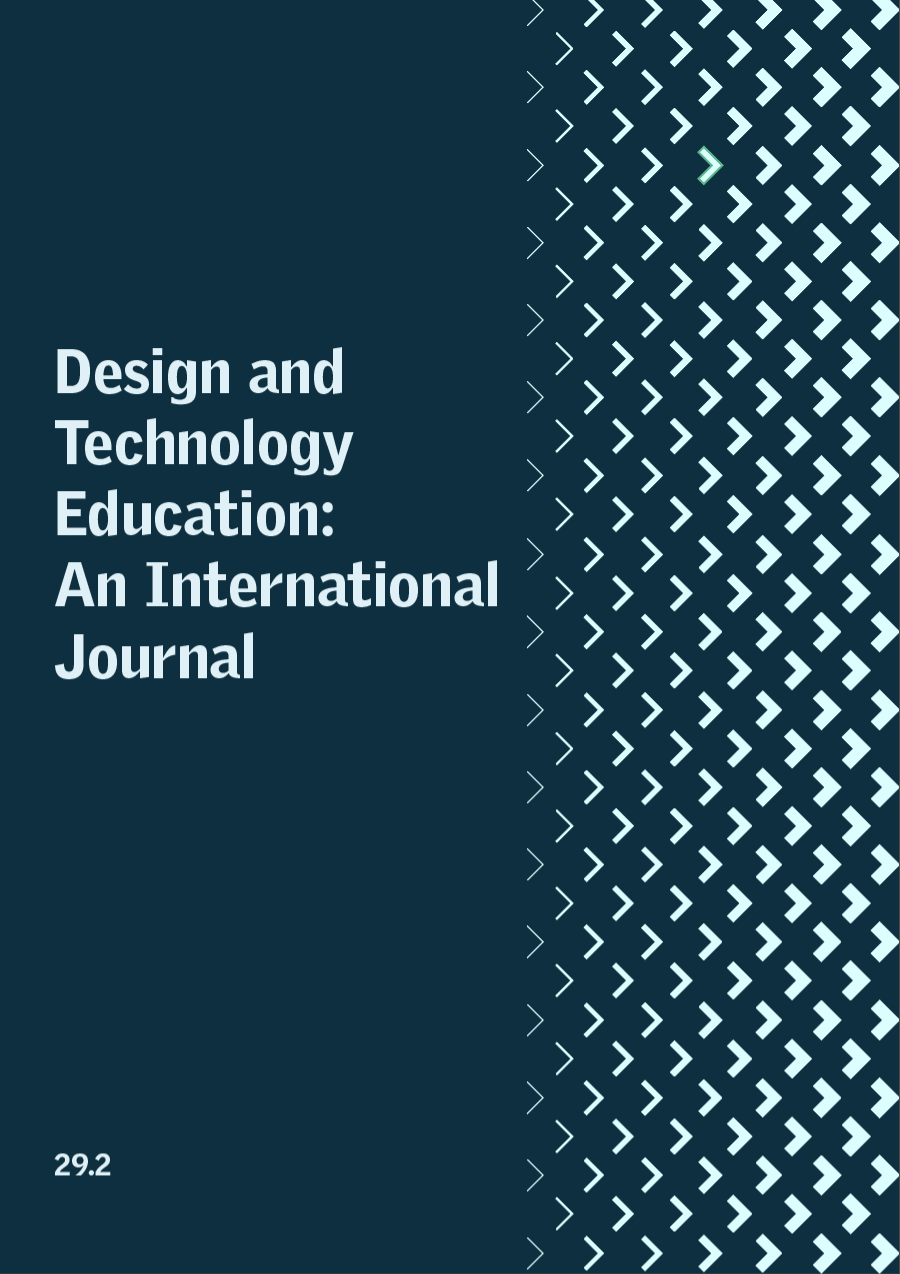Teachers’ Scaffolding Strategies in Relation to Enacted Verbal Reasoning in the Design Process
Keywords:
Technology education, Design process, Scaffolding, Teacher strategies, Means-end reasoning, Cause-effect reasoningAbstract
Learning to reason in the design process is enclosed in the process of learning to design. Hence, in this study, we explore teacher-student interactions with the aim of describing teachers’ support strategies in relation to enacted reasoning in the design process in secondary school technology education in Sweden. The study deploys social cultural theory as a lens, with a focus on scaffolding means and intentions of the teacher. Relevant reasoning in the design process is theoretically framed as means-end reasoning and cause-effect reasoning. Empirical data was collected through three classroom observations with three different Swedish secondary school technology teachers, with subsequent interviews with the teachers using stimulated recall. During the observations the students were engage in different design processes. The data was analysed using thematic analysis, where themes as strategies were constructed for each reasoning type from patterns of meaning in teachers’ scaffolding means and intentions. For each reasoning type, teachers employed strategies of decreasing control and increasing control. However, the enactment of these strategies differed in scaffolding intentions and means in relation to what reasoning was verbally enacted. Our findings indicate that teacher-student interactions within the design process in technology education classrooms hold significant meaning and value. This has implications for both teaching and learning in the field.
Downloads
Published
How to Cite
Issue
Section
License
Copyright (c) 2024 Ellinor Hultmark, Susanne Engström, Annica Gullberg

This work is licensed under a Creative Commons Attribution 4.0 International License.
This work is licensed under a Creative Commons Attribution 4.0 International License.
Authors who publish with this journal agree to the following terms:
Authors retain copyright and grant the journal right of first publication with the work simultaneously licensed under a Creative Commons Attribution License that allows others to share the work with an acknowledgement of the work's authorship and initial publication in this journal.
Authors are able to enter into separate, additional contractual arrangements for the non-exclusive distribution of the journal's published version of the work (e.g., post it to an institutional repository or publish it in a book), with an acknowledgement of its initial publication in this journal.


